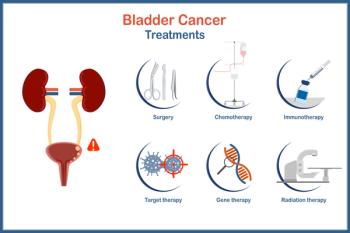
Medicare Advantage Special Needs Plans Becoming More Popular, KFF Report Says
Enrollment in Medicare Advantage Special Needs Plans (SNPs) has grown steadily since becoming permanent in 2018, now accounting for 21% of Medicare Advantage enrollees, with recent growth driven by chronic condition SNPs surpassing dual-eligible SNPs due to changing CMS requirements, according to a new KFF report.
Enrollment in Medicare Advantage Special Needs Plans (SNPs) is on the rise, according to a recent
SNPs were made a permanent part of the Medicare Advantage program in 2018, and since then, SNP enrollment rates have risen 13%. They now account for 21% of Medicare Advantage enrollees.
From 2024 to 2025, SNPs accounted for 48% of total Medicare Advantage enrollments.
The report looked at three types of SNPs:
- Dual eligible SNPs (D-SNPs) are for members with both Medicare and eligibility, who tend to have lower incomes and more functional and cognitive impairments. Most (82%) of SNP enrollees are in a D-SNP.
- Chronic condition SNPs (C-SNPs) are for members with
certain chronic conditions . Almost all (97%) C-SNP plans are for people for diabetes or cardiovascular conditions but can also include conditions such as end-stage liver disease or multiple sclerosis. Only 16% of total SNP enrollees are in a C-SNP. - Institutional SNPs (I-SNPs) are for members who require services at a long-term care facility for more than 90 days. In 2024, there were approximately 115,000 Medicare beneficiaries enrolled in an I-SNP.
D-SNP Enrollment Increases Steadily, Then Drops
SNP growth from 2018 to 2024 was driven by D-SNP enrollment—growing more than 90%. Specifically, from 2.2 million members in 2018 to 5.8 million enrollees in 2024.
However, D-SNP enrollment dropped in 2025, with only 159,400 new enrollees, according to the report.
This is likely due to CMS requirement changes.
“Starting in 2022, CMS no longer contracts with conventional Medicare Advantage plans that enroll at least 80% dual-eligible individuals (“D-SNP look-alikes”),” the authors write. “In 2025, this threshold was lowered to 70% and is scheduled to be lowered to 60% starting in 2026.”
C-SNPs Take The Lead
Between 2024 and 2025, C-SNPs accounted for 75% of total SNP enrollment growth. This is likely because C-SNPs are not required to have the same level of integration that D-SNPs have, the report says.
“These requirement changes could incentivize efforts to enroll more dual-eligible individuals in C-SNPs, which are not subject to the look-alike thresholds like conventional Medicare Advantage plans or Medicaid integration and coordination requirements like D-SNPs, particularly since many dual-eligible individuals have
As a result, 2025 C-SNP enrollment surpassed D-SNP enrollment at 476,300 new enrollees.
Large, National Carriers Offer Most SNPs
Together, UnitedHealth Group Inc. and Humana Inc. accounted for 54% of SNP enrollments in 2025. Specifically, UnitedHealth enrolled 51% of 1-SNPs, 51% of C-SNPs and 38% of D-SNPs. Humana enrolled 0% of I-SNPs, 20% of C-SNPs and 13% of D-SNPs.
Only 14% of SNP enrollees are in plans administered by nonprofit insurers.
Newsletter
Get the latest industry news, event updates, and more from Managed healthcare Executive.

















































